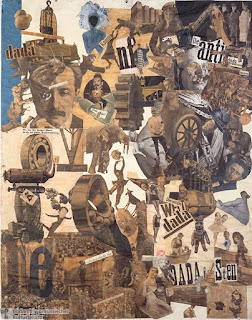
Figure 1 Mountains and Sea (1942) by Helen Frankenthaler
Hannah Höch was a German artist during the dada movement. At
first she was not accepted as a Dadaist artists. “Dada, an art movement that challenged every
convection (except male supremacy) and scandalized bourgeois society (GG 66).
Hoch was also one the first artists to make photomontages by using images from
the media. Figure 2 depicts a map of all the countries in Europe that have
given women voting rights. The following link https://www.khanacademy.org/humanities/art-1010/wwI-dada/dada1/v/hannah-h-ch-cut-with-the-kitchen-knife-1919-20
Offers a very detailed analysis of Hannah Höch picture The
picture also illustrates the fragmentation of the country and the political
chaos during the 1919-1920 as seen through the eyes of Höch. Cut with the
Kitchen Knife Dada Through the Last Weimar Beer-Belly Cultural Epoch of
Germany, 1919-1920. The idea of cutting things is also similar in how pictures
are cut and pasted in a photomontage.

Figure 2 shows Cut with the Kitchen Knife Dada Through the
Last Weimar Beer-Belly Cultural Epoch of Germany, 1919-1920. by Hannah Höch
Additionally, Surrealism is a movement that aims to express
the unconscious and inner thoughts of the artists. An important key figure
during the Surrealist movement is Leonora Carrington (1917-2011). The following link http://www.theartstory.org/artist-carrington-leonora.htm
illustrates Carrington biography. Carrington’s art explore on the ideas of
sexual identity. Interestingly she avoids stereotyping and objectifying women.
One of her famous paintings Self-Portrait (1937-1938), shows Carrington’s
wearing androgynous clothes and giving her hand to a hyena (illustrated on Figure 3). According to
Chadwick: “The Self-Portrait (1930) by Leonora Carrington reinforces the woman
artist’s use of the mirror to assert the duality of being, the self as the
observer and observed” (Chadwick 314). The author emphasizes how Carrington’s
portrait serves as a way in which she can reinvent her reality and life. In a
very similar way Claude Cahun expresses herself as a man and a woman. According
to the Guerilla Girls: "Instead of presenting herself as a passive object ready
to be consumed by a heterosexual male gaze, she defiantly presents as both
object and subject of her own sexual fascinations” (63). Her identity was
confounded for some people couldn’t categorize her as a woman or man.

Figure 3 Self-Portrait (1937-1938) by Leonora Carrington

Figure 4 Claude Cahun, Self Portrait 1928
Another important figure of the Surrealist movement was the
Mexican painter Frida Kahlo (1907-1954). Chadwick mentions: “The duality of Kahlo’s
life—an exterior persona constantly reinvented with costume and ornament, and
an interior image nourished on the pain of a body crippled in a trolley
accident when she was an adolescent…” (313). Kahlo’s works represent her
reality. The background in her paintings serves to illustrate her inner most
thoughts, desires, and pain. Her inability to conceive a child is often
illustrated in her paintings such as “Henry Ford Hospital”, “My Birth” 1932.
Although Kahlo didn’t considered or identified as a Surrealist, her painting, “The
Two Frida’s (1939) is one that is surrealist. Kahlo’s painting on the left
depicts Frida who is heartbroken and broken. It illustrates her pain at losing
Diego Rivera, her husband. The Two Frida’s are connecting by a vein. The Frida
on the right is a person that is complete, the one that loves Rivera, and is not
heartbroken. In her hand she holds a picture of Rivera, which signifies that
she is still in love with her husband. This painting is very symbolic because
it represents Frida Kahlo as the person that she is and the one the she wants
to become- simply the duality of her life.


Figure 5 The Two Frida’s by Frida Kahlo (1932)
Modernism is a period of changes in which art and artists
artwork evolves. Dadaism, Abstract Expressionism, Dadaism, Surrealism are
movements that serves to define modernism. Modernism and its eras are shaped by
artists such as Frida Kahlo, Hannah Höch, Helen Frankenthaler etc.
Works Cited
Chadwick, Whitney. Art, Women and Society. Thames & Hudson. 2015. 5th Ed.
The Guerrilla Girls. The Guerrilla Girls' Bedside Companion to the History of Western Art. Penguin Group. 1998.
No comments:
Post a Comment